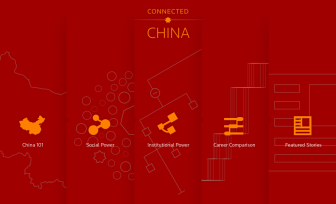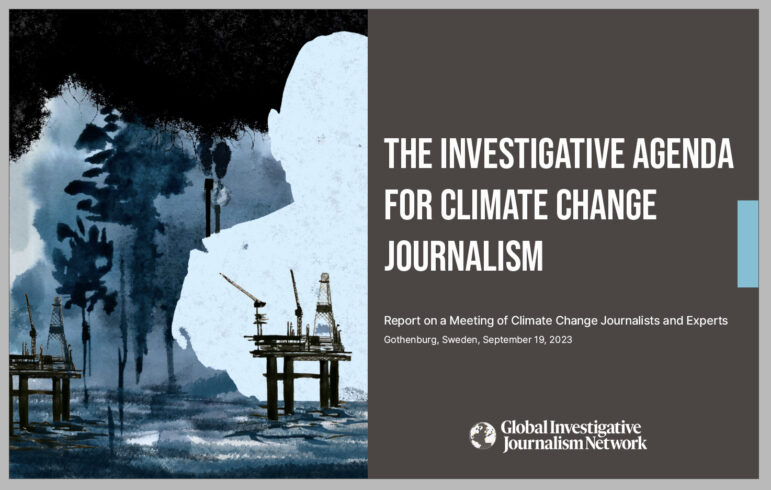

Why We Need To Tell Stories
So you’ve amassed terabytes of data, reams of documents and hours of expert testimony, all backing up your conclusions. What’s the best way to convince people you’re right?
Tell them a story.
Ideally, a compelling, colorful tale weaving in memorable anecdotes and striking details. Printed in a clear, legible font. Oh, and it helps – no kidding – if it rhymes.
At least according to Nobel-prizewinning economist Daniel Kahneman, author of the outstanding Thinking, Fast and Slow, who’s made a career out of understanding – experimentally – how our brains take in information and make decisions. It isn’t always pretty, but it does help explain why storytelling is a centuries-old means of passing on information. He gives a great speech here that explains – with color, anecdotes and stories, of course – why that is. It runs more than an hour, but it’s well worth watching.
So what has this got to do with The Future of Journalism, and/or the notions of structured journalism?
And haven’t I written at least a couple of times why we have to get past the story as the basic unit of journalism? It’s true, I have. And I think we do. But if we’re going to rethink journalism for a digital age, and serve our audiences/readers better, we need to know how they prefer to get information, what our (and their) limitations are, and how best to achieve that goal.
But let me go back first to Kahneman, and his talk at the National Academy of Science’s conference on “The Science of Science Communication.” (And to digress: Read his book.. It’s full of great stuff.) To grossly oversimplify: Our brains are capable of deep, analytic, rational thought, but they’re – to put it bluntly – lazy. We prefer conclusions that are easily digested, don’t contradict our previous experience or understanding of the world, and form a coherent narrative.
So we like things that rhyme, because it lowers the cognitive load on our brains – people assign a higher faith in the line “woes unite foes” than they do to the identical, non-rhyming “woes unite enemies.” We trust statements in clear fonts that we do in illegible fonts – a real endorsement of the importance of good design and news presentation. And we like stories that make sense – that have enough specifics to make them memorable and give a sense of coherence.
In short, all of the sorts of things your English teacher (or journalism professor) told you to do to make your stories compelling – find characters you can build the story around, adding color and detail, etc. And it makes sense: As Kahneman notes, anecdotes make issues concrete and allow us to better see them in our minds. (They also fire up different parts of your brain.)
Of course, all this has nothing to do with how good the quality of the information in the story is; we don’t assess it for truth as much as we do for how well it hangs together. As Kahneman says in his speech:
What we have is a storytelling system and the coherence of the story determines how much faith we have in it.
Marketing people know this, which is why they try to pitch a compelling story around their products or brands. Mark Lightowler, a pharmaceutical marketing veteran, notes on his blog that:
It’s highly probable that the work by Daniel Kahneman in ‘Thinking Fast and Slow” supports the thought that we naturally resist new ideas or concepts without a resonating story. Kahneman says this is due to our desire for cognitive fluency. Fluency is a state where the intuitive system of our minds readily processes information as it looks for meaning. Where meaning cannot be found the reasoning part of our brain takes over and enters a slower but more methodical approach to work out meaning. As he says the brain is lazy and likes a compelling story to guide it.
…
We need the intuitive system to give the green light for the rationale system to engage and make the changes suggested by the data. In the absence of a compelling story the intuitive system can create a story of its own with the potential for biased assimilation of data ie the use of data to support reasons not to use the brand. For this reason even the best evidence based brands can struggle to engage without a compelling story to carry the data into understanding.
Substitute “journalism” or “revelation” for “brands” in the sentence above, and you might come to the conclusion that we should focus on stories if journalism is to have any impact. Otherwise, the argument goes, even the best, most deeply-reported data-backed story will fail to get any traction in the broad public.
And we probably should, for any major pieces of work we’re embarking on, or anything we think will challenge people’s conventional beliefs.
But stories have their problems as, for want of a better phrase, “information delivery systems” as well. For one thing, they don’t scale well. We can’t write great stories on every subject every day; we can barely write mediocre stories on a range of topics each day. It’s not simply a question of manpower – although that has much to do with it – it’s also that, as audiences fragment, it becomes harder and harder to write pieces that appeal to each subgroup. Short of machine-generated text – although we’re already on the threshold of that age – it’s simply impossible to write all the stories that people want or need.
And stories don’t have to be text, in any case: There are compelling narratives that are told in photographs, video or graphics, and while Kahneman hasn’t addressed them in his research – or at least, I don’t think he has – it seems logical that the same kinds of cognitive biases that prefer a coherent narrative structure in text would want the same in a visual medium.
Take this powerful visualization built by design house Periscopic of gun deaths and potential years of life lost, for example. As Alberto Cairo, infographics professor and author of The Functional Art, notes, it’s not simply a dump of data, but one designed – intended – to persuade.
But is this project really just about numbers? Periscopic doesn’t hide that it is not. Stylistic choices (color, type, animation) were made to transform the interactive not into an efficient tool for data analysis—although readers can sort and filter the lines—but into a powerful visual metaphor. The goal of “U.S. Gun Deaths” is not only to inform, but also to demand a discussion about gun control. It is a smart instrument for persuasion: “Here you have the numbers,” the graphic implies. “They are worrisome. Shouldn’t we talk about them?”
 And projects like our Connected China present information in a coherent package so that users can see it in context and explore it in a quasi-narrative fashion – less a visual op-ed and more a deeply-reported story package. But certainly not a dump of data.
And projects like our Connected China present information in a coherent package so that users can see it in context and explore it in a quasi-narrative fashion – less a visual op-ed and more a deeply-reported story package. But certainly not a dump of data.
Arguably, the human brain – which is also highly adapted to discerning visual patterns (even when sometimes there’s none) – might take even more effectively to visual narratives than to text ones; and the age of vast amounts of data and cheap computing power might make those narratives more and more economical to build at scale.
The point isn’t that stories are ideal – or not – at communicating and persuading people; it’s that we’re entering an age where we can much more effectively offer a range of types of presentation formats. The well-told tale, complete with great color and anecdotes, backed up by rigorous data analysis, and supported by great multimedia elements, may well continue to be the gold standard we aspire to; but we need also to be working how best to harness our reporting and presenting capabilities so we can create other types of narratives that touch people.
 Reprinted from (Re)Structuring Journalism. Reg Chua has been a journalist for more than a quarter-century; he’s currently editor, data and innovation, at Thomson Reuters. Prior to that, he was editor-in-chief of the South China Morning Post and had a 16-year career at The Wall Street Journal.
Reprinted from (Re)Structuring Journalism. Reg Chua has been a journalist for more than a quarter-century; he’s currently editor, data and innovation, at Thomson Reuters. Prior to that, he was editor-in-chief of the South China Morning Post and had a 16-year career at The Wall Street Journal.











